As square balers are almost ready to be pulled out of sheds for the fast-approaching harvest season, it is essential that these machines are running correctly to reduce the chance of unexpected down time while working in the field.
Maintenance, along with tight baling windows, means the job needs to be done as fast as possible as one shower of rain could prove disastrous.
Typically when balers are running they are subject to high temperatures and dusty working conditions.
If the correct maintenance procedures are not carried out before the season kicks off, as well as daily throughout the season, parts such as bearings may fail and often lead to fire given the hot dusty working conditions.
In this maintenance guide, we look in particular at a New Holland machine.
Although baler makes and models vary, the basic principles will remain the same for all other square baler brands.
Beginning
To start at the beginning, it is important that the baler has been washed or blown down to remove any dirt, dust or crop debris build-ups that may cover potential areas of interest when servicing.
Many contractors or farmers may not clean balers at the end of each season as water may enter bearings or cause rust, while some clean balers just before the season comes to a close and spray thoroughly with a diesel oil mixture.
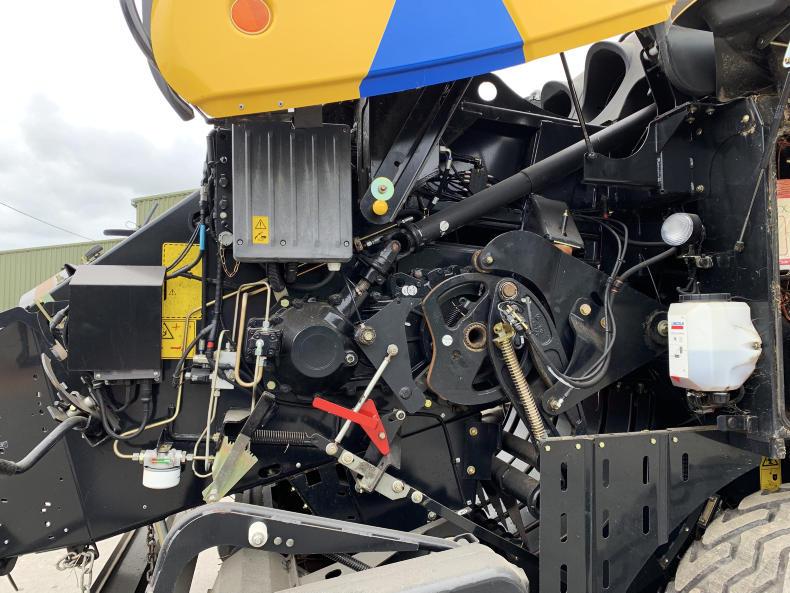
All areas of the baler should be dirt free before servicing to expose key components that may require attention.
Shafts, slip clutches
and flywheel
Working from front to back, start with the PTO shaft. It is important wide-angle PTO shaft joints are receiving grease and that universal joints are all intact, showing no signs of stiffness and that no excessive heating has occurred. These shafts and joints should be greased thoroughly at least once daily as they are exposed to high loads and rotational speeds.
Slip clutches, especially the large flywheel slip clutch, should be disassembled and each of the copper discs checked for wear and replaced if necessary. If no wear is present, the discs should be cleaned and reused. Incorrect tension on the forward-facing springs or over greasing may cause premature engagement of the clutch. All springs should be evenly tensioned. This is done by measuring the bolt length and spring length.
When restarting the baler after breaking a flywheel shear bolt, it is often a good idea to depressurise the bale chamber as it reduces initial load on the slip clutch. Once running, build back up pressure before continuing.
Check the flywheel bearing for play. This can be easily done by applying the flywheel brake and watching to see if the brake lifts the flywheel. If so, the flywheel bearing will need attention as this will only lead to a serious problem down the road. The gearbox shaft to the rear of the flywheel should also be examined for movement. Excessive play here will see a leaking gearbox seal indicating movement. This slight movement can often be rectified using shims but in some cases the flywheel and gearbox shaft may need to be removed to tighten the locking nut. Using shearbolts with correct breaking strength is important.
For example, flywheel shearbolts in many cases require bolts with a breaking strength of 8.8MPa, while the stuffer drive requires the same size bolt with a higher breaking strength of 10.9MPa. If these are mixed up, further damage can be caused to the baler components.
The packer slip clutch and pickup slip clutch should also be stripped and checked for wear, following the same procedure as above.
Behind the pickup slip clutch is an overrun hub containing two spring-loaded pins that prevent the pickup running backwards. These pins should be checked for wear and if any signs of wear or damage are present, the hub should be replaced. Loud noises from the pickup while running are a sure indication of this problem.
Pickup and chain tension
The full pickup should be checked for broken tines and that cam bearings are in good condition. Any strings or unwanted debris should be removed if wrapped around pickup tine bars.
These balers have several chains – two smaller chains either side to power the pickup and two larger chains to drive the packer and knotters.
These chains will stretch over time, so it is important to measure stretch and tension if necessary. If too loose, chains will wear sprockets and bearings quickly. If chains are tensioned correctly, you should be able to feel a slight slack in the chain when grabbed or pulled.
Automatic chain oilers should be checked and adjusted to deliver a suitable level of oil to chains. Often these small oil lines can block easily.
Hydraulic oil tank
Modern balers are fitted with their own oil supply, usually mounted at the front of the machine. A visible level indicator shows oil level. This is a closed system and shouldn’t require any maintenance unless a pipe bursts leading to dirt entering the system and/or oil being lost.
Stuffer and knotter brakes and drives
It is recommended that stuffer and knotter brakes are stripped down and replaced each year as these brakes are working all day every day. If these brake plates are not replaced, hubs may seize up. Both the knotter drive and stuffer drive dog arms have small rollers which could possibly be seized after the winter period so check that each roller is free-moving or replace if necessary.
Knotters and needles
Troublesome knotters can make an operator’s life unpleasant and may result in reduced output or further breakages. Knotters are complicated pieces of equipment and should be handled with care.
All knotter holding pins should be removed and the knotters lifted up, ensuring all moving parts – including billhooks, twine discs, stripper arms, pinions and cams – are intact and moving freely. Modern balers are fitted with auto-lube systems where the operator can control lubrication intervals from the cab. A good test to ensure this system is working is to set the lubrication system to run for 30 seconds straight and watch that each knotter receives sufficient oil with no leaks. If there is a gap between the billhook and stripper arm, shims may be needed to close these gaps and ensure knotters keep preforming as they should.
Knotter fans or blowers should be working correctly as these keep the knotters free from debris. Knotter lollipops should be all present and straight as these play a pivotal role in locating a dropped knot.
At the top of the needles are small rollers. These should be present and in good order. If not, they should be replaced.
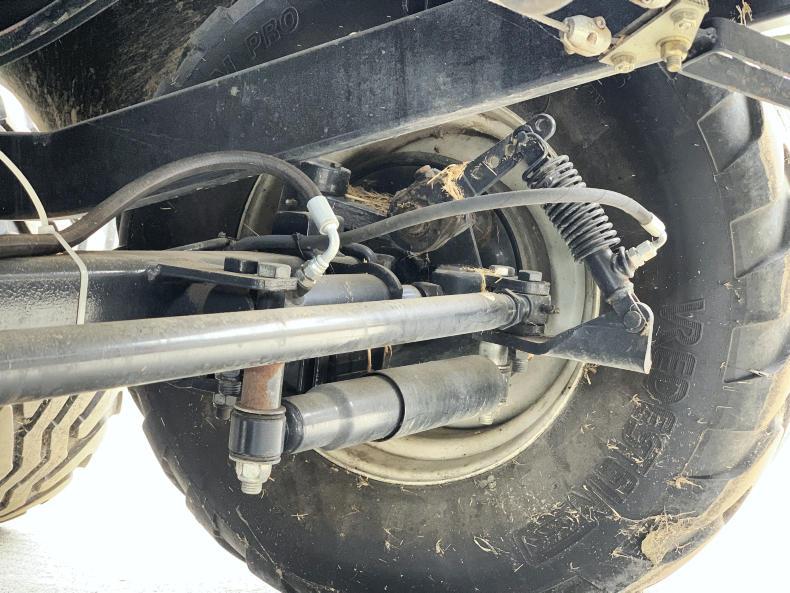
Axles and brakes should be checked and serviced accordingly.
Brakes and axles
Brakes are an important feature to have functioning correctly as poor or seized brakes may lead to excessive heat and then fire. Individual hubs should ideally be stripped down and checked for shoe wear and any debris present should be removed. New machines are often fitted with electric parking brakes, so it is important to ensure electrical connections are intact and that good contacts are made as poor connections generate heat which may lead to fire. Steering axles and sprung axles should be greased regularly as they are constantly moving. Steering axles should be working correctly and locked while traveling the road regardless of distance to prevent the operator losing control.
Tyres should be properly inflated, free from cuts and excessive wear. While bale chute rollers should be free moving. Modern balers are fitted with a number of sensors so it is important to ensure each sensor is functioning correctly or the operator will see errors appearing on the control terminal. It is worthwhile having spare parts in the tractor cab, shear bolts, billhooks etc to prevent downtime in the field.
As square balers are almost ready to be pulled out of sheds for the fast-approaching harvest season, it is essential that these machines are running correctly to reduce the chance of unexpected down time while working in the field.
Maintenance, along with tight baling windows, means the job needs to be done as fast as possible as one shower of rain could prove disastrous.
Typically when balers are running they are subject to high temperatures and dusty working conditions.
If the correct maintenance procedures are not carried out before the season kicks off, as well as daily throughout the season, parts such as bearings may fail and often lead to fire given the hot dusty working conditions.
In this maintenance guide, we look in particular at a New Holland machine.
Although baler makes and models vary, the basic principles will remain the same for all other square baler brands.
Beginning
To start at the beginning, it is important that the baler has been washed or blown down to remove any dirt, dust or crop debris build-ups that may cover potential areas of interest when servicing.
Many contractors or farmers may not clean balers at the end of each season as water may enter bearings or cause rust, while some clean balers just before the season comes to a close and spray thoroughly with a diesel oil mixture.

All areas of the baler should be dirt free before servicing to expose key components that may require attention.
Shafts, slip clutches
and flywheel
Working from front to back, start with the PTO shaft. It is important wide-angle PTO shaft joints are receiving grease and that universal joints are all intact, showing no signs of stiffness and that no excessive heating has occurred. These shafts and joints should be greased thoroughly at least once daily as they are exposed to high loads and rotational speeds.
Slip clutches, especially the large flywheel slip clutch, should be disassembled and each of the copper discs checked for wear and replaced if necessary. If no wear is present, the discs should be cleaned and reused. Incorrect tension on the forward-facing springs or over greasing may cause premature engagement of the clutch. All springs should be evenly tensioned. This is done by measuring the bolt length and spring length.
When restarting the baler after breaking a flywheel shear bolt, it is often a good idea to depressurise the bale chamber as it reduces initial load on the slip clutch. Once running, build back up pressure before continuing.
Check the flywheel bearing for play. This can be easily done by applying the flywheel brake and watching to see if the brake lifts the flywheel. If so, the flywheel bearing will need attention as this will only lead to a serious problem down the road. The gearbox shaft to the rear of the flywheel should also be examined for movement. Excessive play here will see a leaking gearbox seal indicating movement. This slight movement can often be rectified using shims but in some cases the flywheel and gearbox shaft may need to be removed to tighten the locking nut. Using shearbolts with correct breaking strength is important.
For example, flywheel shearbolts in many cases require bolts with a breaking strength of 8.8MPa, while the stuffer drive requires the same size bolt with a higher breaking strength of 10.9MPa. If these are mixed up, further damage can be caused to the baler components.
The packer slip clutch and pickup slip clutch should also be stripped and checked for wear, following the same procedure as above.
Behind the pickup slip clutch is an overrun hub containing two spring-loaded pins that prevent the pickup running backwards. These pins should be checked for wear and if any signs of wear or damage are present, the hub should be replaced. Loud noises from the pickup while running are a sure indication of this problem.
Pickup and chain tension
The full pickup should be checked for broken tines and that cam bearings are in good condition. Any strings or unwanted debris should be removed if wrapped around pickup tine bars.
These balers have several chains – two smaller chains either side to power the pickup and two larger chains to drive the packer and knotters.
These chains will stretch over time, so it is important to measure stretch and tension if necessary. If too loose, chains will wear sprockets and bearings quickly. If chains are tensioned correctly, you should be able to feel a slight slack in the chain when grabbed or pulled.
Automatic chain oilers should be checked and adjusted to deliver a suitable level of oil to chains. Often these small oil lines can block easily.
Hydraulic oil tank
Modern balers are fitted with their own oil supply, usually mounted at the front of the machine. A visible level indicator shows oil level. This is a closed system and shouldn’t require any maintenance unless a pipe bursts leading to dirt entering the system and/or oil being lost.
Stuffer and knotter brakes and drives
It is recommended that stuffer and knotter brakes are stripped down and replaced each year as these brakes are working all day every day. If these brake plates are not replaced, hubs may seize up. Both the knotter drive and stuffer drive dog arms have small rollers which could possibly be seized after the winter period so check that each roller is free-moving or replace if necessary.
Knotters and needles
Troublesome knotters can make an operator’s life unpleasant and may result in reduced output or further breakages. Knotters are complicated pieces of equipment and should be handled with care.
All knotter holding pins should be removed and the knotters lifted up, ensuring all moving parts – including billhooks, twine discs, stripper arms, pinions and cams – are intact and moving freely. Modern balers are fitted with auto-lube systems where the operator can control lubrication intervals from the cab. A good test to ensure this system is working is to set the lubrication system to run for 30 seconds straight and watch that each knotter receives sufficient oil with no leaks. If there is a gap between the billhook and stripper arm, shims may be needed to close these gaps and ensure knotters keep preforming as they should.
Knotter fans or blowers should be working correctly as these keep the knotters free from debris. Knotter lollipops should be all present and straight as these play a pivotal role in locating a dropped knot.
At the top of the needles are small rollers. These should be present and in good order. If not, they should be replaced.

Axles and brakes should be checked and serviced accordingly.
Brakes and axles
Brakes are an important feature to have functioning correctly as poor or seized brakes may lead to excessive heat and then fire. Individual hubs should ideally be stripped down and checked for shoe wear and any debris present should be removed. New machines are often fitted with electric parking brakes, so it is important to ensure electrical connections are intact and that good contacts are made as poor connections generate heat which may lead to fire. Steering axles and sprung axles should be greased regularly as they are constantly moving. Steering axles should be working correctly and locked while traveling the road regardless of distance to prevent the operator losing control.
Tyres should be properly inflated, free from cuts and excessive wear. While bale chute rollers should be free moving. Modern balers are fitted with a number of sensors so it is important to ensure each sensor is functioning correctly or the operator will see errors appearing on the control terminal. It is worthwhile having spare parts in the tractor cab, shear bolts, billhooks etc to prevent downtime in the field.






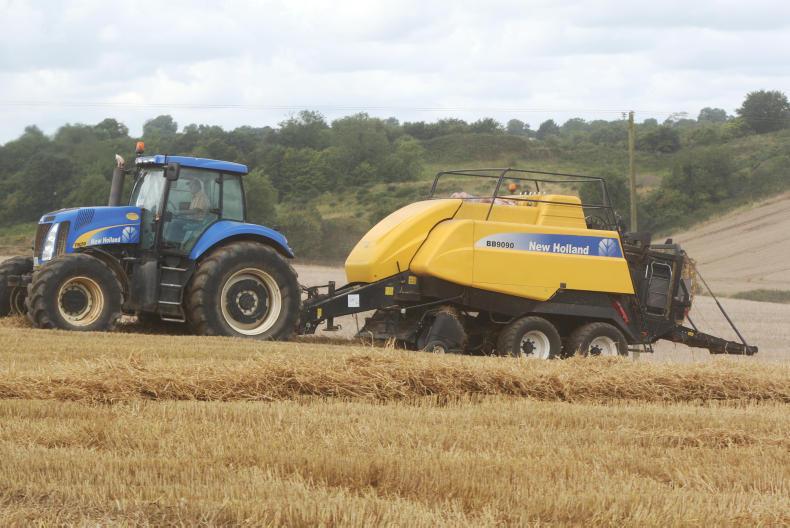
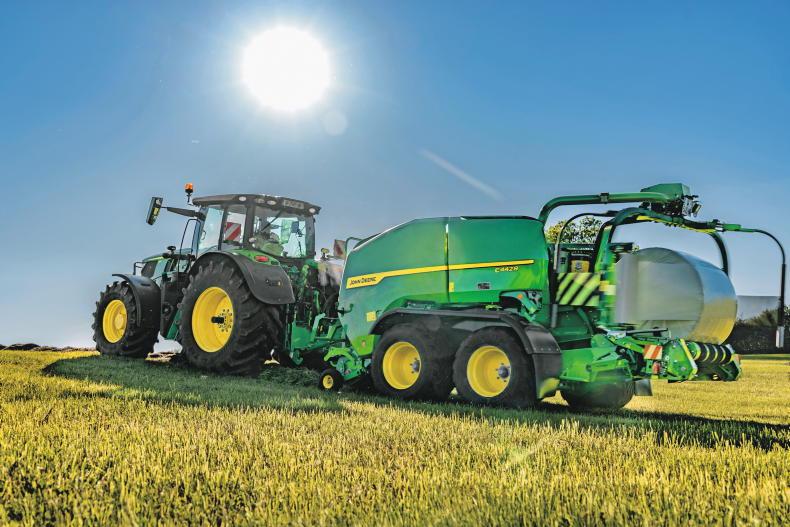

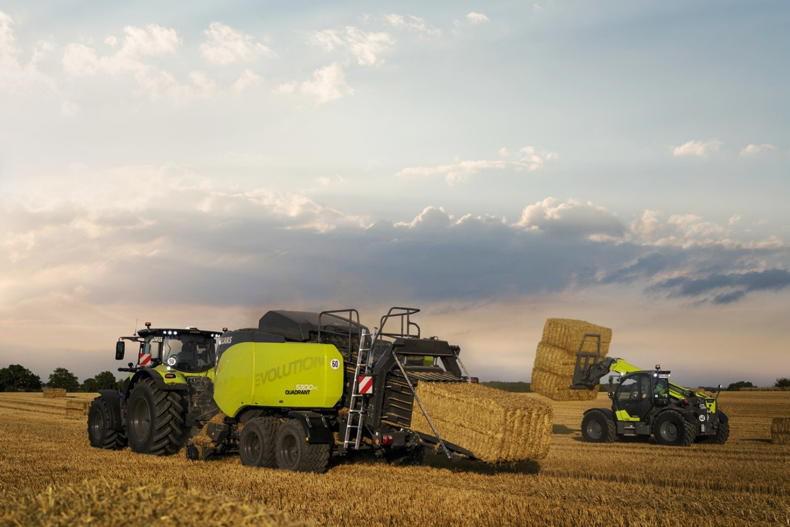
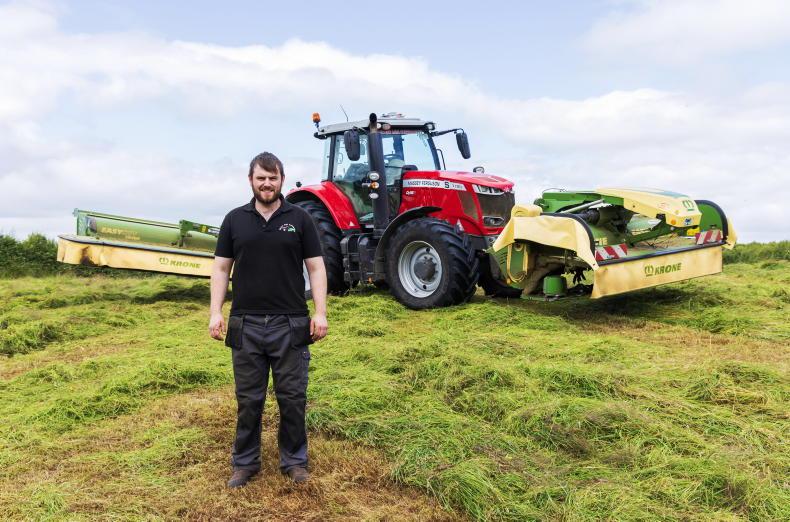
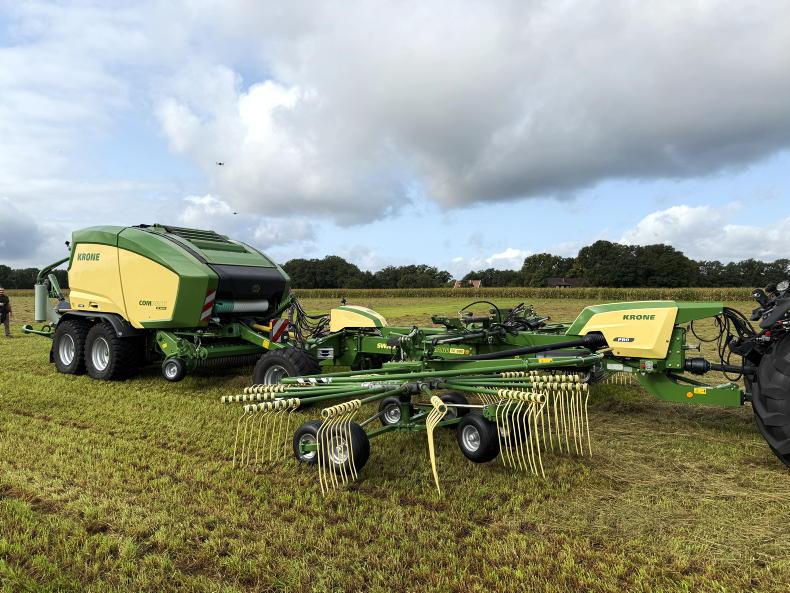
SHARING OPTIONS